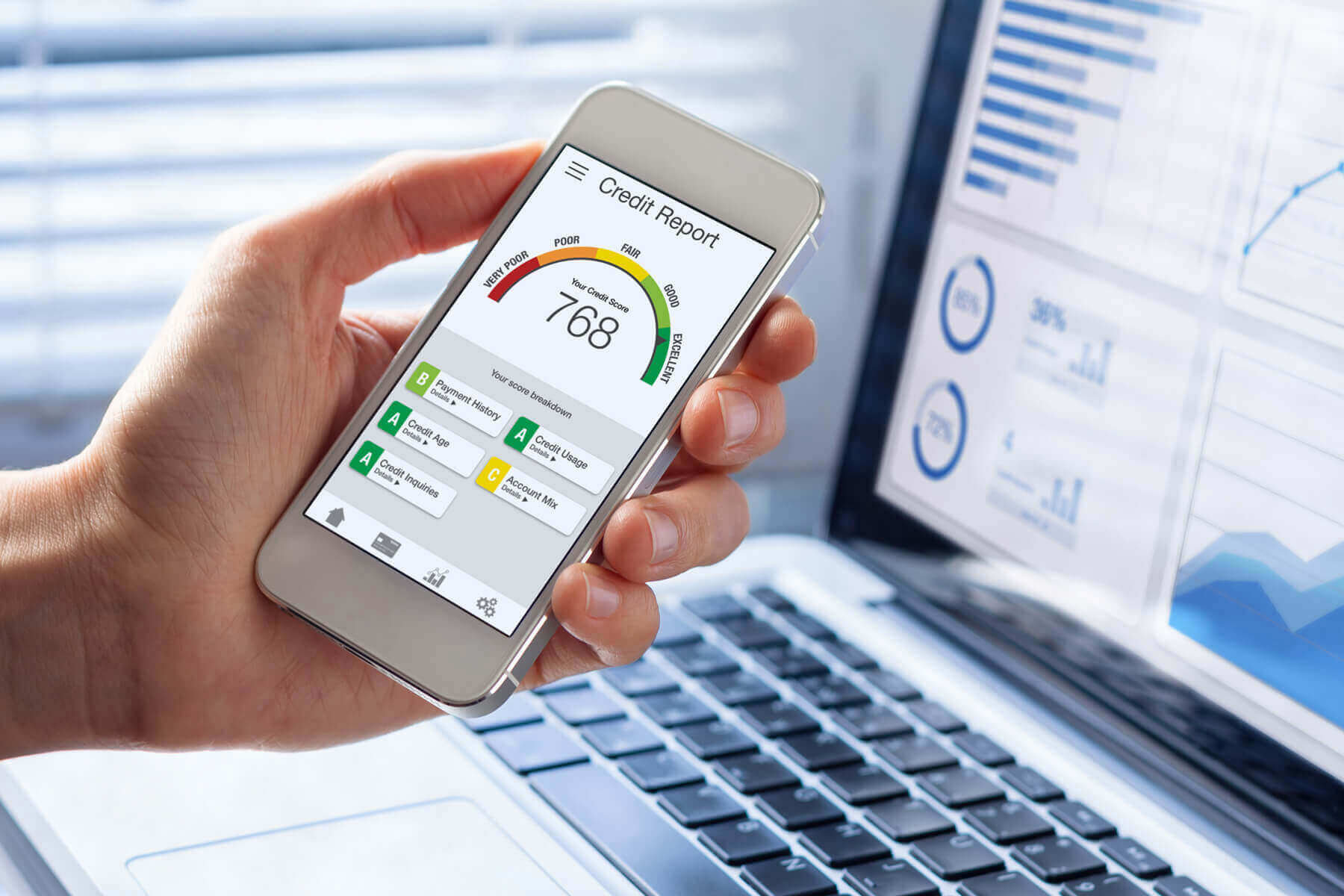Ask the Experts: Consumer Lending

In this series, we take a look at the inner workings of the Credit Union and meet some of the champions who help our members in every facet of their financial lives. This month, we met up with expert Bryan Eichenbaum, an expert on all things lending at American Heritage.
Bryan Eichenbaum Bryan Eichenbaum has been working with credit unions for over 20 years. His experience is all in lending, mostly consumer lending. His primary focus has been on direct lending and changing delivery to point-of-sale, specializing in adapting to meet members where they are. |
How are we different from other institutions? Besides the credit union difference, how do we distinguish ourselves from our peers? How do our consumer products differentiate? Why should a consumer or member choose our consumer products?
We put the member first, and we try to make sure everything we do provides value back to the member.
Some organizations put their product first, or profit first, or otherwise put their own benefit first. At American Heritage, we always strive to give as much back to the members as possible, asking, "Is this in their best interest?" before making major decisions.
One such example is our debt protection program, an insurance program so valuable we wanted to make it as accessible to members as possible. We lowered the price compared to others, then took the revenue it generated and gave it back to the membership.
Additionally, we limit fees on loans, with no additional fees or price adjustments where possible. Members feel more at ease knowing everything is fair and in line with other options.
Lending is a highly competitive market, but our brand and marketing makes our consumer products personalized. We want the member to see themselves using these products and to lead with education so they know how to use them.
We treat our members differently and try to make point-of-sale transactions frictionless, but we also strive to make the issues just as easy to deal with as the initial transaction. American Heritage is there for our members during every step, not just the beginning.
What is the most popular consumer product at American Heritage and why?
The most popular products are credit cards, which tend to be the most popular in general, not just at American Heritage. Our cards have no annual fees, no balance transfer fees, a fixed (not variable) rate, and are always priced lower compared to specialized ones, such as retail-specific cards.
Auto loans are another popular product, since we finance them directly through the Credit Union as well as partnering with 150 dealerships with which we have a great relationship.
Our Home Equity products have an added benefit of financing nationally, a benefit compared to other well-known credit unions. In this way, we are able to help members no matter where they go.
How do we stay financially healthy while having one, two, or three consumer loans? How does a borrower find balance?
To find balance, Bryan provided us with these tips and words of wisdom:
- Finance only what you can afford.
- When using credit cards, only purchase what you can pay off that month or the following month.
- Finance short term, not long term.
- When making financing decisions, ask yourself, "Is this the right way to finance this purchase?"
- Have a budget and positive cash flow (income in versus bills going out). If not, look and see what you can get rid of.
- The more money you make, the more you will spend.
- Look at your credit score: pay bills on time, keep your credit card balances at zero when bureaus report, and finance with good creditors.
- Pay attention to your credit limit. You don’t want to be deemed high risk with high utilization.
- Pay multiple times or pay before it is reported in order to maximize credit score, especially when between credit tiers.
What loan products should people ideally have in their portfolio?
A mortgage, car, and credit cards are the products you should strive to have in your credit history, and a good experience with all three. Your car and mortgage should be paid on time, and if you don’t have these products, you may not have what is considered a deep credit history.
If you are making payments towards these products and not in your name (but perhaps in a parent's), keep proof of your payments to show the loan officer. If you can provide statements proving the transfer of the money each month, that is data that can be used in the determination process.
If you want a mortgage, you’ll want a rent payment that is similar in cost to prove you can support the payment. During your first time car shopping, a lender may not apply a higher payment, but offer a comparable lease with incremental ways to
get there. An otherwise good credit history and a good down payment always help.
As something to keep in mind, lease rates tend to be higher and are paying for something you don’t own. To determine whether purchasing or leasing a vehicle is best for you, weigh the pros and cons. This includes interest rates, future upgrades, the potential use of the vehicle, and other factors.
The more time you have in your credit bureau history, the more certainty there is. If you’ve paid your credit cards well for the last 10 years, there’s more flexibility when a lender is viewing your file.
It is valuable to know the difference between thin, normal, and thick credit files:
- Thin: less than 2 years, 2-3 trade lines, not a lot of history
- Normal: 3-5 years, a few additional lines, maybe not a mortgage or auto loan
- Thick: all expected credit; FICO does not know you by age or income, only by the details in your file.
As a rule, age 28 is when most people have a “normal” credit file with the main three products, though there may be a shift in this demographic going forward.
What are your rules of keeping a good and healthy credit score?
- Don’t apply for credit often to keep inquiries down.
- Be careful what you apply for. Resist promos and in-store offers.
- Don’t close cards. If a lender tells you to, ask why. You may have too much debt, too many cards, or are applying too often.
- Hang with the "right crowd." Some lenders have a negative reputation and are considered high-risk.
30% Credit utilization rule – myth or fact?
This rule is definitely true. It was originally spoken about in generalizations but has since been confirmed to be the truth. The five categories that contribute to your FICO score are as follows:
- 35% payment history
- 30% total available credit
- 15% length of credit history
- 10% types of credit in use
- 10% credit inquiries
When looking at credit inquiries, know the difference between a hard pull and a soft pull. A soft pull does not impact your credit score, while a hard pull does.
Newer loan origination systems perform a soft pull until you are ready to fund and that is when a hard pull occurs.
At American Heritage, we prequalify people with a soft pull. That way, when they decide to go through with the loan, they are confident they will qualify and that the hard pull will be worth it.
For people applying for loans right now, does the current economic climate affect the determination process?
Economic factors always influence lending in that the products presented are impacted. The actual application process should not be affected, qualifications should not change, and lending practices should not change unless consumer behavior changes. When it comes time for these changes, two to three years of losses should be looked at and this data used to mitigate future issues.
People often use credit cards to supplement income to get through a hardship. Data points like this show that economic factors might impact what we finance or how the product is designed, but the market being "bad" is not the case.
How should I prepare to apply for a loan? If I’m applying in the near future, are there any quick fixes or credit score boosts?
At least two to three months before applying is when you should prepare, especially for a larger loan amount. If there is no improvement during this time, factor this into your buying power and the amount of interest you’re going to pay.
Know that when you apply for credit, your score goes down, but when you start making payments, it goes back up.
Research your budget. Ask what your budget is for this purchase, and if you don’t know, your first step is to work out a budget. Know what you can afford by figuring out a reasonable monthly payment and backing into the total. If you really do want
it, make sacrifices. Small changes can add up to get
where you want to be.
What should someone do if they are denied for a loan?
The best thing you can do is communicate with the lender about the denial. There may be additional options available, and at the very least, you may get an actionable answer as to why you were denied.
At any point in your credit journey, always practice good financial discipline: track your budget and start with your budget over credit options, as bad credit comes typically from negative cash flow. If you prefer personalized help, walk into any of our branches to speak with one of our certified debt counselors.
For more tips about what to do if you've been denied, we have an entire blog article dedicated towards helping those affected by this issue.
What do you wish that people knew about consumer lending?
It would be most beneficial to members if they could give more documentation during the average application process, as that information would provide possibly missing pieces needed to make the decision. Evidence makes a stronger case for lending: a track record of showing the ability to do something, such as afford a monthly payment. This puts the member in the best position to meet their needs.
It is always best to communicate more rather than less. We are constantly looking for ways to meet the member where they need.
What are the best resources to learn about consumer lending?
- The850Club to perfect your credit
- The Albert app for financial advice
- Save on bills and subscriptions with Billshark
- Educate yourself with trusted resources and reading materials
- Our blog covers a variety of topics and includes links to calculators and more
How would you say things have changed here since you started in 2015? What changes do you anticipate in the next five to ten years?
We take a more balanced approach of meeting members where they are while keeping their finances safe. We have a new process. Moving into electronic closing and document signing has helped provide an easier and more consistent process for members and the credit union.
We should never be complacent. We must continue to change our approach, which is a lot of hard work, but worth it. We need to continue to change our approach to stay current and to help the member do less.

